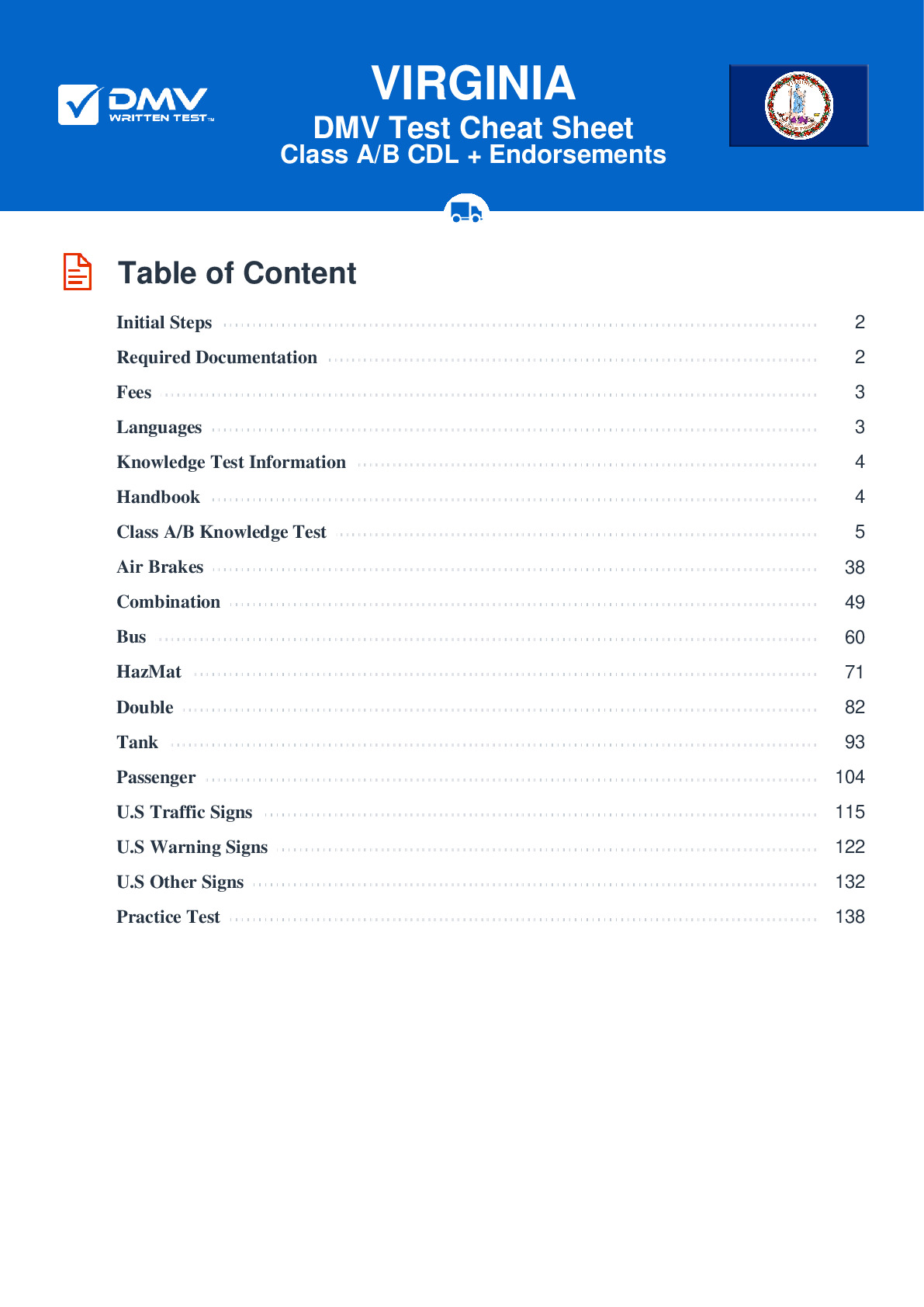Combination
All applicants who are applying for a Class A CDL should be prepared to take the Combination test. This test covers information found in Section 6 of the Commercial Driver License Manual. Section 6 provides the information needed to safely operate tractor-trailers, doubles, triples, and straight trucks with trailers. The test is made up of 20 multiple-choice questions, and applicants will need to correctly answer a minimum of 16 questions to pass. The Combination test is not a replacement for the Double/Triple endorsement test.
Number of Question
Passing Score
8. What does an Anti-Lock Braking System (ABS) do?
Explanation
An Anti-Lock Braking System (ABS) helps prevent wheel lockup during hard braking. If ABS detects impending lockup, it reduces braking pressure to a safe level.
9. If only a trailer is equipped with an Anti-Lock Braking System (ABS):
Explanation
If a trailer is equipped with an Anti-Lock Braking System (ABS) but the tractor is not, the driver will still have increased control while braking. A trailer with ABS is less likely to swing out of its lane than a trailer without ABS.
10. A trailer that is too high:
Explanation
Before coupling together a tractor and a trailer, you should make sure the trailer is at the proper height. If the trailer is too low, the trailer nose may be damaged. If the trailer is too high, it may not be able to couple correctly.
11. Before a trip, you can make sure air flows to all trailers by:
Explanation
Before a trip, ensure that air in the air brake system reaches all trailers. Do this by waiting for air pressure to build, then sending air to both the emergency and service lines and opening the shut-off valves on the rear of the last trailer. If air escapes from the shut-off valves in the rear of the combination, the air is being supplied to the entire vehicle.
12. Rearward amplification refers to:
Explanation
The "crack-the-whip" effect is a result of rearward amplification. If not properly handled, a trailer can tip over due to rearward amplification.
13. If color-coded, which color is used to identify emergency, or supply, lines?
Explanation
Air lines are sometimes color-coded to help drivers avoid mistakes when coupling glad hands. Typically, blue is used for service lines and red is used for emergency lines.
14. The trailer hand valve should be used:
Explanation




